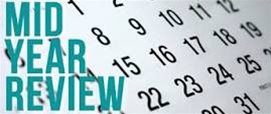 ≡
≡
What To Look For In A Mid-Year Review
Nov 30, 2023 by Sean Luce Let's begin with a definition: A mid-year review (MYR) is an account-by-account breakout of each salesperson's account list. It is the second X-ray of accounts that should be done by a sales manager in a 12-month period. The first, of course, is the SBP (strategic budget planners), which is the forecasting tool and goal analysis system used to project billing for each account, and then cumulatively for the account list. The SBP process also breaks out individual goals for the year, along with an in-depth rating of critical areas such as sales skills, organization and administration, time management, and other areas.
Let's begin with a definition: A mid-year review (MYR) is an account-by-account breakout of each salesperson's account list. It is the second X-ray of accounts that should be done by a sales manager in a 12-month period. The first, of course, is the SBP (strategic budget planners), which is the forecasting tool and goal analysis system used to project billing for each account, and then cumulatively for the account list. The SBP process also breaks out individual goals for the year, along with an in-depth rating of critical areas such as sales skills, organization and administration, time management, and other areas.
The MYR is usually done in June or early July. The projections made in the SBP are now analyzed to determine if they are performing as expected and if (and where) attrition has accrued. This process includes an in-depth analysis of each account.
By mastering account management, in most cases sales will increase by a minimum of 15 percent per year just by holding sales reps accountable to the system. Here are some observations from MYRs conducted with clients this summer.
ACCOUNT SEGMENTATION. How do you segment your reps' accounts? Those I work with are segmented based on dollar value. This is an economy-of-scale issue, meaning that the bigger the market, the bigger the value for A accounts. For example, in a medium market, A accounts would be $25,000-plus annually, or better. B accounts range from $10,000 to $25,000, and C accounts have been active in the past 90 days and billed up to B level, or at least $10,000 per year. A D is developmental, and must bill in 90 days once on a rep's list, or they come off. (The number of Ds is capped at 30 accounts maximum.) S accounts are seasonal, such as the circus, but do not include the local Ford-Lincoln-Mercury dealer that only advertises on radio in the first quarter.
Ultimately, the goal is for every rep to have at least five A accounts, 10 B accounts (twice the number of As), and 15 C accounts (50 percent more than Bs). I recently saw an account list that broke out this way: 6 A accounts, 12 Bs, and 18 Cs - perfect!
CATCH IT NOW: Recently, a rep lost three A accounts on her list just three weeks prior to the MYR. She had a great first half of the year, but will likely miss her sales goals in the next three months if nothing is done to correct this problem. Most sales reps would get to September after their surplus is gone and ask the question, "Where did my surplus go?" and try to pull out the year. The MYR eliminates that. It catches any attrition and allows the sales manager to establish an up-selling timetable with specific action steps or prospecting goals. This way, the rep can make up the difference before September.
WEEDING OUT ACCOUNTS: I recently conducted an MYR and found 145 prospecting accounts on a list. These were not classified, and were held in a P category. Get rid of the Ps - prospects should have a thorough customer marketing profile (first call needs analysis) done before they hit the D list. Otherwise, your reps have a hunting license. When they put something on a list, reps are compelled to follow up, even though it's really not an account yet.
TIME MANAGEMENT: As and Bs have once-a-week contact, Cs and Ds are bi-weekly, and S accounts have tickler files to remind the rep two months out. One of the biggest problems today for reps is ROTI (return on time invested). An account management system puts reps in front of the accounts that will produce the most money for the station.
VACATION: Take your vacation before the MYR, or right after. You'll need it. The average length of these meetings is 4-6 hours for each rep - no kidding. The MYR and the SBP at the start of the year are the two most important meetings between the manager and the sales rep. Roughly 95 percent of radio stations in America don't have any account management system, and only 3 percent of managers do any planning for the future. Next time you're under your projections going into midyear, pull this article up and email me for the MYR template.
Related Categories> Publications > Radio Ink




